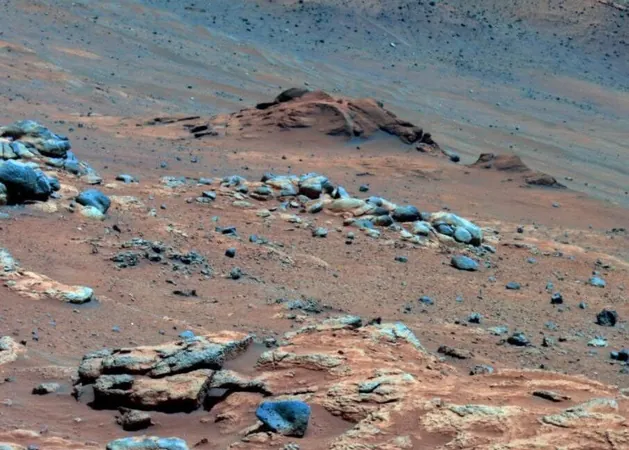
Chilling Insights: New Martian Climate Model Reveals Harsh Reality for Potential Life
2025-07-13
Author: Jessica Wong
Diving Into the Martian Mysteries
The Curiosity rover has been on a remarkable journey up Mount Sharp, the largest sediment stack on Mars. Along the way, it unearthed samples suggesting that a portion of the Martian atmosphere's carbon dioxide may have been trapped in sedimentary rocks—similar to how limestone forms on Earth. This phenomenon could mean that carbon dioxide was drawn out of the atmosphere, leading to a significant decrease in the greenhouse effect that once warmed the planet.
Revolutionary Findings in Mars' Climate Dynamics
Building on these groundbreaking discoveries, a dedicated team of scientists led by Benjamin Tutolo from the University of Calgary has drawn up a novel climate model that factors in these new insights. Working alongside Edwin Kite, a planet science professor at the University of Chicago, they've developed the first model of its kind that incorporates Martian topography and the Sun's luminosity, while also considering the latest orbital data. This comprehensive model reveals how the climate and landscape of Mars have transformed over an astonishing 3.5 billion years.
A Harsh Environment for Hosting Life
The results paint a bleak picture; any form of Martian life would have faced extreme challenges. Kite explains that very early in Mars' history—around 4 billion years ago—the planet was warm enough to support lakes and extensive river networks. Some seas may have been comparable in size to Earth’s Caspian Sea. However, this wet era proved fleeting, leaving behind a landscape that was not deeply weathered or eroded.
From Wet to Arid: The Era of Salts
As the climate cooled and transitioned into the so-called 'era of salts', vast areas of the planet showcased significant snowmelt, leading to the formation of extensive salt flats. Even during this transformation, liquid water didn’t vanish entirely; intermittent oases emerged in an otherwise desolate environment. But these small pockets of habitability were short-lived, gradually disappearing into an arid landscape.
Fleeting Habitats: The Tricky Case for Martian Life
The stark reality of Mars' evolutionary history complicates the quest for evidence of life. Kite suggests that while microbes from Earth could survive in those brief oasis conditions, the real question remains: could life have originated on ancient, warm Mars? Unfortunately, the evidence hints towards a grim conclusion: harsh conditions likely extinguished any surface life.
Mount Sharp: The Key to Understanding Mars?
Kite acknowledges that much of their model is built upon findings from a single location—Mount Sharp. If this area is particularly rich in carbonates and not representative of Mars as a whole, the model may fall short in accurately depicting the planet’s history. Moreover, the model doesn’t account for the physical conditions before the era of salts when conditions might have been warmer and wetter.
A Glimmer of Hope for Life on Mars?
Despite the bleak projections, Kite remains cautiously optimistic. He speculates that subsurface waters might be the only refuge for potential microbial life, suggesting they may have survived the harsh dry periods and resurfaced during moments of habitability. 'We can't close the door on Martian life just yet,' he emphasizes, hinting at the need for further investigation into ancient Martian biosignatures.
The Quest Continues
As Curiosity continues its mission and uncovers more samples, the hope for uncovering biological evidence amplifies. Recent discoveries, including long-chain alkanes that could indicate past life, promise exciting possibilities for future explorations. The journey to understanding Mars and its potential for life is far from over.


 Brasil (PT)
Brasil (PT)
 Canada (EN)
Canada (EN)
 Chile (ES)
Chile (ES)
 Česko (CS)
Česko (CS)
 대한민국 (KO)
대한민국 (KO)
 España (ES)
España (ES)
 France (FR)
France (FR)
 Hong Kong (EN)
Hong Kong (EN)
 Italia (IT)
Italia (IT)
 日本 (JA)
日本 (JA)
 Magyarország (HU)
Magyarország (HU)
 Norge (NO)
Norge (NO)
 Polska (PL)
Polska (PL)
 Schweiz (DE)
Schweiz (DE)
 Singapore (EN)
Singapore (EN)
 Sverige (SV)
Sverige (SV)
 Suomi (FI)
Suomi (FI)
 Türkiye (TR)
Türkiye (TR)
 الإمارات العربية المتحدة (AR)
الإمارات العربية المتحدة (AR)